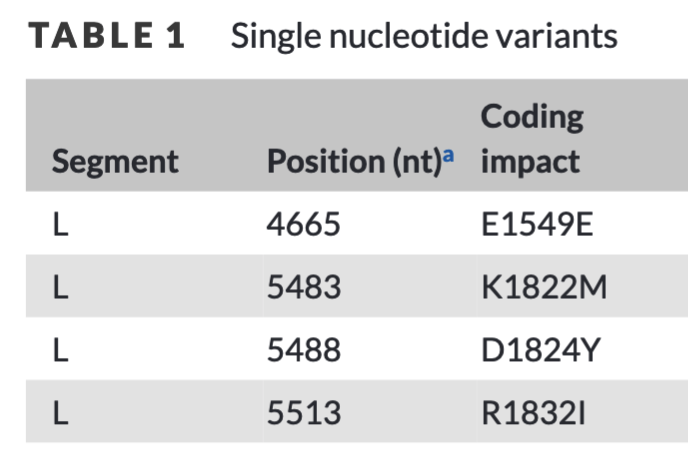Abstract
Rift Valley fever virus (RVFV) is a mosquito-borne pathogen with significant human and veterinary health consequences that periodically emerges in epizootics. RVFV causes fetal loss and death in ruminants and in humans can lead to liver and renal disease, delayed-onset encephalitis, retinitis, and in some cases severe haemorrhagic fever. A live attenuated vaccine candidate (DDVax), was developed by the deletion of the virulence factors NSs and NSm from a clinical isolate, ZH501, and has proven safe and immunogenic in rodents, pregnant sheep and non-human primates. Deletion of NSm also severely restricted mosquito midgut infection and inhibited vector-borne transmission. To demonstrate environmental safety, this study investigated the replication, dissemination and transmission efficiency of DDVax in mosquitoes following oral exposure compared to RVFV strains MP-12 and ZH501. Infection and dissemination profiles were also measured in mosquitoes 7 days after they fed on goats inoculated with DDvax or MP-12. We hypothesized that DDVax would infect mosquitoes at significantly lower rates than other RVFV strains and, due to lack of NSm, be transmission incompetent. Exposure of Ae. aegypti and Cx. tarsalis to 8 log10 plaque forming units (PFU)/ml DDVax by artificial bloodmeal resulted in significantly reduced DDVax infection rates in mosquito bodies compared to controls. Plaque assays indicated negligible transmission of infectious DDVax in Cx. tarsalis saliva (1/140 sampled) and none in Ae. aegypti saliva (0/120). Serum from goats inoculated with DDVax or MP-12 did not harbour detectable infectious virus by plaque assay at 1, 2 or 3 days post-inoculation. Infectious virus was, however, recovered from Aedes and Culex bodies that fed on goats vaccinated with MP-12 (13.8% and 4.6%, respectively), but strikingly, DDvax-positive mosquito bodies were greatly reduced (4%, and 0%, respectively). Furthermore, DDVax did not disseminate to legs/wings in any of the goat-fed mosquitoes. Collectively, these results are consistent with a beneficial environmental safety profile.
